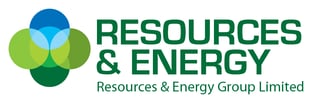Barclay Pearce Capital
- Aug 30, 2021
- 3 min read
Australian mining exports hit record $310 billion
Australia's mining and resources sector continues to support the national economy during difficult times. Exports are projected to reach a record high of $310 billion this financial year, according to federal government trade data.
As many global industries struggle through the COVID-19 downturn and worsening trade with China, Australia's energy and resource commodities consistently buck the trend. High demand for iron ore and gold mining, in particular, supports economic growth and offers investment opportunities.
Iron ore
Iron ore remains Australia's biggest export in 2021. High demand from China and continuing
disruption of competing exports from Brazil have seen the iron ore price reach a record US$230 per tonne, defying predictions of a fall. Earnings from Australian iron ore producers have risen by almost 50 per cent over the past 12 months to reach an estimated $149 billion, delivering strong profits to mining companies and investors.
disruption of competing exports from Brazil have seen the iron ore price reach a record US$230 per tonne, defying predictions of a fall. Earnings from Australian iron ore producers have risen by almost 50 per cent over the past 12 months to reach an estimated $149 billion, delivering strong profits to mining companies and investors.
The high demand for iron ore has been credited to China's aggressive infrastructure programs that require the raw steel material, along with disruptions at Vale's iron ore mines in Brazil reducing global seaborne supply. These conditions are expected to be temporary, however, with analysts expecting Chinese steel production to be curbed in the coming months and supply volumes from Brazil to increase. This will likely see a fall in iron ore prices later this year, with the federal government forecasting a more modest average of US$150 per tonne for 2021 that could even drop below US$100 by the end of next year.
Coal
While iron ore has boomed, Australia's second-largest export has experienced a decline in 2021. Exports of metallurgical coal (used in steel production) fell by 38 per cent from $35 billion to $22 billion, while thermal coal (used in power plants) dropped from $21 billion to $17 billion. This has seen Australian coal miners lose a combined $20 billion over the past year.
This decline is believed to be due to reduced energy demand during the coronavirus pandemic and informal restrictions on Australian coal by China as a result of diplomatic tensions. China has paid a premium for coal from other markets such as the United States and Canada while Australian cargoes have been denied entry.
The ongoing feud is likely to see continuing losses for coal miners who are already facing increasing pressure from environmental laws. Many investors are turning away from coal assets due to uncertainty about their future.
Gold
In times of economic and political uncertainty, investors rely on safe haven assets to protect their
wealth, particularly gold. Demand for gold has been high throughout the pandemic, and despite
price fluctuations over the past year, the price is expected to stabilise around US$2000 per ounce
through the remainder of 2021.
The return of lockdowns in many parts of Australia has had less impact on gold prices than in 2020 as investors know what to expect. However, we may see more volatility in the gold markets if
lockdowns persist through the rest of the year.
Resources & Energy Group (ASX: REZ)
Barclay Pearce Capital client Resources & Energy Group (ASX: REZ) is a gold explorer, developer and producer, with projects in Western Australia and Queensland. REZ is focused on developing highly prospective and low-risk Australian mining regions.
Resources & Energy was formed in 2005, and has operated as a gold exploration and development company since 2015.
To keep up to date with their news and progress, and for more information about gold investment as a whole, subscribe to the Resources & Energy Group Chairman's List.
Share Link









